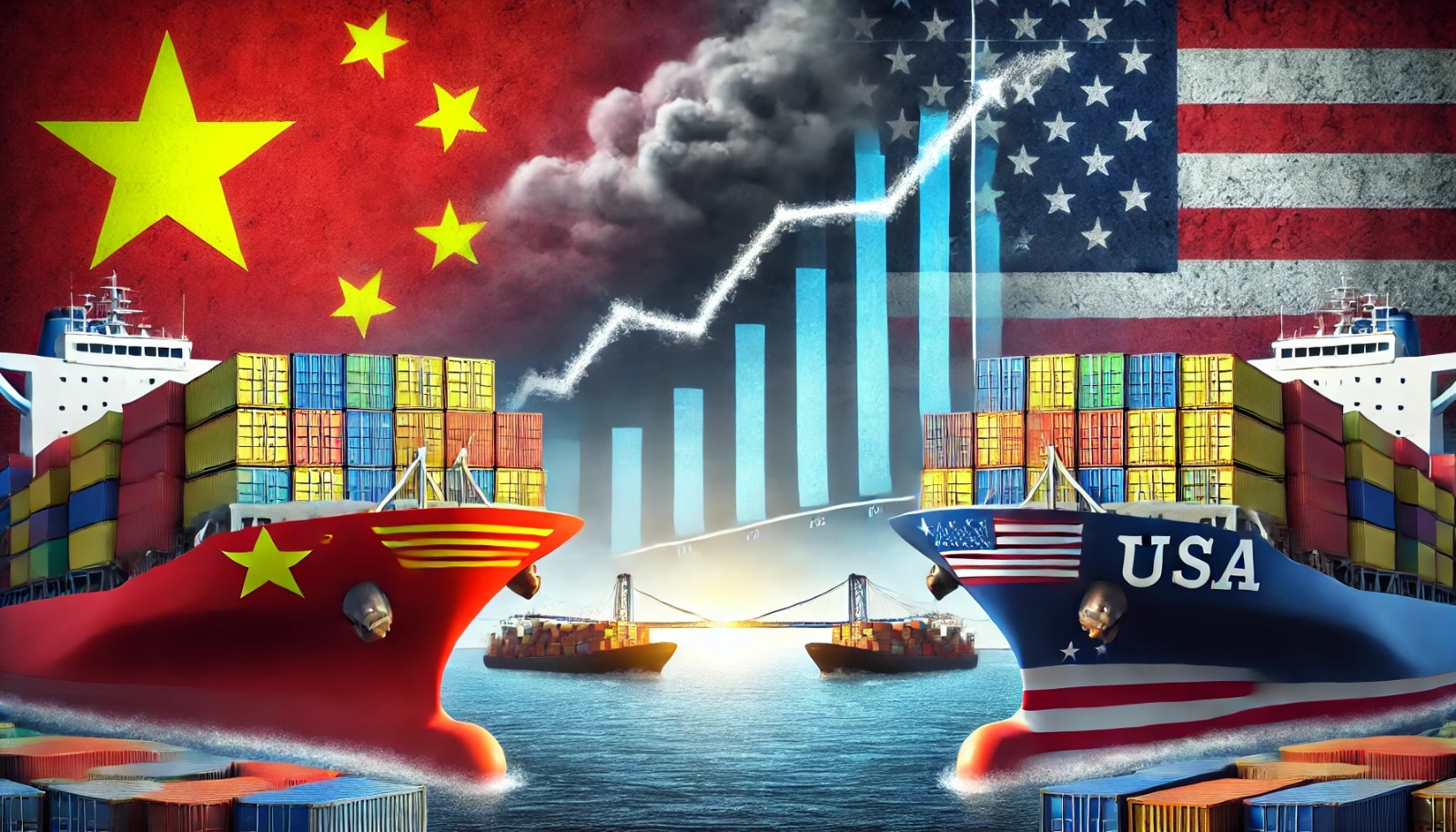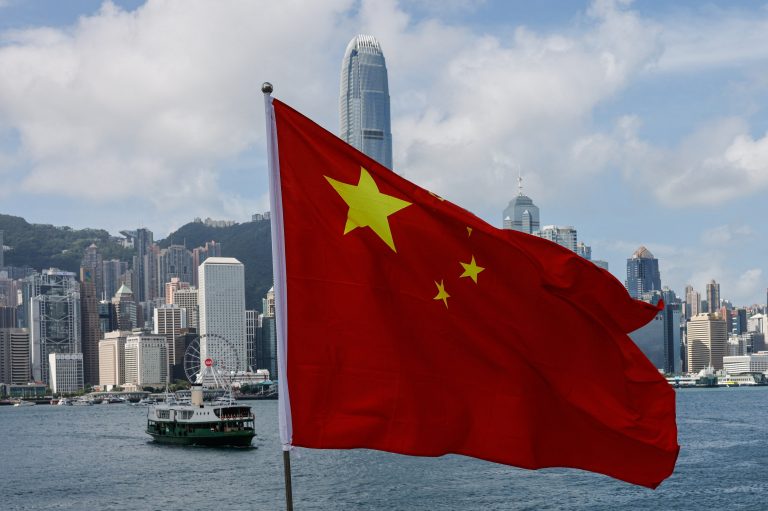
China Hits Back as Trump’s Tariffs Go into Effect
The United States’ decision to impose tariffs on Chinese imports has sparked fresh tensions in global trade, marking a new chapter in the ongoing US-China economic rivalry. At midnight, a 10% tariff on a broad range of Chinese goods officially came into force, prompting immediate retaliatory action from Beijing. This tit-for-tat escalation has raised questions among policymakers, businesses, and consumers alike. Could this be the start of a protracted trade war, or a strategic move by world powers seeking a more favourable negotiating platform?
We explore the origins of these tariffs, China’s direct countermeasures, and the potential impact on international markets and ordinary households. Drawing on insights from the Wall Street Journal, CNN, and the Peterson Institute for International Economics, we examine the trade dispute’s complexity, the political calculations behind it, and the likely scenarios that may shape its future.
The Tariffs: An Overview
On the campaign trail, US President Donald Trump frequently criticised what he labelled “unfair trade practices” by China, singling out perceived intellectual property theft and a growing US trade deficit. Once in office, he followed through with a series of tariffs targeting Chinese products. Initially, President Trump had mentioned figures as high as 60% during campaign rallies. However, the rate that ultimately took effect was 10%, covering a wide swathe of goods.
According to the Office of the US Trade Representative (USTR), these tariffs target an estimated USD 200 billion worth of Chinese goods. Consumer electronics, textiles, and machinery are just a few of the products included on the list. At a press availability, Trump described this move as the first step in a broader strategy, stating: “That was just an opening salvo. If we can’t make a deal with China, then the tariffs will be very, very substantial.”
The impact of these measures extends well beyond trade data. Economists caution that higher import costs will be felt by businesses, who could pass them on to consumers in the form of price hikes. A study by the Peterson Institute for International Economics estimates that US households could bear an additional cost of up to USD 1,200 per year if tariffs escalate significantly. Such figures underscore the tangible, everyday burden on consumers, especially those living paycheck to paycheck.
China’s Retaliation
The speed and precision of China’s retaliation came as little surprise to observers. Within hours of the US tariffs entering into force, the Chinese Ministry of Commerce unveiled countermeasures, including:
● A 15% tariff on US coal and liquefied natural gas
● A 10% tariff on US crude oil, large cars, and pickup trucks
● An investigation into Google, citing potential violations of Chinese anti-monopoly regulations
● The addition of two major US companies (including the parent company of Calvin Klein and Tommy Hilfiger) to a sanctions list for “unreliable entities,” under which China may restrict imports, exports, and visas for employees
The choice of targets is telling. China is the world’s largest consumer of coal, and it imports considerable amounts of crude oil from various countries, including the United States. Beijing’s decision to impose tariffs on energy resources signals both its willingness to retaliate and its confidence that alternative suppliers (such as Russia or Middle Eastern nations) might fill any gap. Hence, while the move is significant symbolically, Beijing’s economy may not suffer dramatically from restricting US imports of these products.
In a brief statement, a spokesperson for China’s Ministry of Commerce noted that while China does not seek a trade war, it “cannot stand idly by” when domestic interests are threatened. This line echoes Beijing’s long-standing claim that it prefers to resolve disputes through dialogue, yet remains ready to retaliate if provoked.
Political Calculations in Washington
In the same 48-hour period that the White House finalised tariffs on China, it delayed a parallel plan targeting Canada and Mexico for at least one more month. The administration cited “new commitments” from Ottawa and Mexico City, though the Wall Street Journalquestioned whether these commitments were substantially different from those offered previously. The Journal’s editorial board argued that President Trump “blinked” on the North American front, highlighting a strategic choice to focus on Beijing rather than risk multiple trade wars simultaneously.
This balancing act reflects shifting alliances and the complexities of global trade negotiations. By pressing pause on the northern and southern fronts, the administration can concentrate on its largest economic rival—China. Moreover, forging some form of compromise with Canada and Mexico may reinforce the administration’s position by ensuring that the North American continent, at least temporarily, remains more united.
Within the US Congress, reactions have been mixed. Trade hawks applaud the firm stance against China, seeing it as a necessary step to curb alleged unfair practices. More moderate Republicans and Democrats, however, worry about potential blowback for American farmers and small businesses, which often depend on stable, predictable supply chains. Companies reliant on Chinese components might face disruptions or cost increases, eventually trickling down to employees and consumers.
Economic Consequences
1. Business Uncertainty
Investors tend to shy away from environments where government policy can shift swiftly. Analysts at Goldman Sachs and Morgan Stanley have expressed concern about the unpredictability emanating from Washington’s tariff proclamations. The potential for further escalation—particularly if China responds more aggressively—creates uncertainty, which can deter investment and slow economic growth.
2. Consumer Costs
Data from the Peterson Institute emphasises the disproportionate effect on low-income households. Families in the bottom 20% of earners spend a more significant portion of their income on goods subject to tariffs, such as basic consumer items and groceries. Thus, even a modest price increase can add up quickly for vulnerable groups.
3. Agricultural and Energy Sectors
China’s choice not to impose retaliatory tariffs on certain high-impact US agricultural products, like soybeans, is notable. Soy plays an essential role in China’s livestock feed, and massive disruptions could raise prices in China’s domestic markets. However, the targeted tariffs on oil, gas, and coal signal that Beijing is prepared to restrict one of America’s fastest-growing export categories to China. This sector may experience both immediate losses and long-term market share erosion if other energy-exporting nations step in.
4. Global Supply Chains
Many products these days involve components manufactured in multiple countries. A tariff in one jurisdiction can lead to a cascade of adjustments across supply chains. Companies may relocate factories or seek alternative suppliers to dodge higher import fees. The complexity of modern supply chains amplifies the ripple effect, potentially driving up production costs worldwide.
Global Ripple Effects
The US-China trade dynamic is crucial not only for these two economies but also for the global financial system. China is the second-largest economy, and the United States remains the largest in nominal GDP. A trade conflict of this scale can disrupt markets from Europe to Asia.
In the European Union, leaders have expressed concern that if the US and China become entrenched in a trade war, global growth projections might weaken. At an EU Council meeting in Brussels, policymakers emphasised unity in responding to protectionist measures, suggesting that the EU is also prepared to defend its trade interests.
Emerging markets, particularly those in Asia, are closely watching the developments. Economies like Vietnam, Malaysia, and Indonesia could see an influx of manufacturers trying to circumvent tariffs by relocating or adjusting supply chains. While some emerging markets might stand to gain in the short term, the broader climate of uncertainty could still hinder sustainable investment.
A Path to Resolution?
Despite the volley of tariffs, there remain potential openings for negotiation. President Trump and Chinese President Xi Jinping have held direct talks previously and are scheduled for further discussions in the coming days. Both sides have an incentive to reach a compromise—China does not want an all-out trade war that could hinder its economic ascent, and the United States aims to ensure stable prices and maintain favourable relations for American exporters.
Trump’s willingness to postpone tariffs on Canada and Mexico by one month hints at flexibility. Observers speculate that a similar “off-ramp” could be applied to China, should negotiations produce concessions the White House deems satisfactory. Yet achieving a consensus will be no easy feat, especially if the US insists on larger-scale intellectual property reforms and an end to what it labels forced technology transfers.
The Human Angle: Consumers and Workers
All trade policies ultimately trickle down to the people who make and buy goods. As tariffs push production costs upward, manufacturers may trim their workforces or slow wage growth. Retailers might raise prices to maintain profit margins. Households, especially those on tight budgets, could face difficult choices at the checkout line.
Simultaneously, certain industries and regions might benefit if tariffs prompt a shift of manufacturing from overseas to domestic plants. In the short run, however, abrupt changes often lead to displacement rather than immediate job creation. Workers in sectors reliant on imported components—like automotive or electronics assembly—face an uncertain future, as do farmers who count on stable export markets.
Conclusion: A Call for Pragmatism and Empathy
The unfolding tariff exchanges between Washington and Beijing underscore the complexities of modern global commerce. Trade disputes in an interconnected world carry real human consequences, reaching from corporate boardrooms in New York to family-run farms in Iowa, and from factories in Shenzhen to shoppers on British high streets. Policymakers need to weigh not only the geopolitical chessboard but also the real effect on ordinary people’s livelihoods.
While some leaders see tariffs as leverage to secure trade reforms, the path is fraught with risks. A measured approach—one that recognises the importance of dialogue, stable supply chains, and mutual economic welfare—serves as the best antidote to the cycle of retaliation. As talks between President Trump and President Xi Jinping loom, the international community hopes that reason will prevail and that a fair, lasting agreement can be reached. If these negotiations falter, more tariffs could be on the horizon, intensifying the strain on families and businesses worldwide.
In these uncertain times, it is crucial for citizens to remain informed and for governments to remember the ultimate beneficiaries (and victims) of economic policy: the people themselves. Economic tensions, if mishandled, can leave a lasting imprint on global stability. Let us hope for a resolution that preserves economic ties, secures jobs, and fosters greater understanding between two leading powers. Only then can the world move beyond the cycles of brinkmanship towards meaningful cooperation, delivering prosperity where it matters most—at ground level, among everyday people whose lives and futures depend on fair, stable, and open trade.
Aric Jabari is the Editorial Director of the Sixteenth Council.



